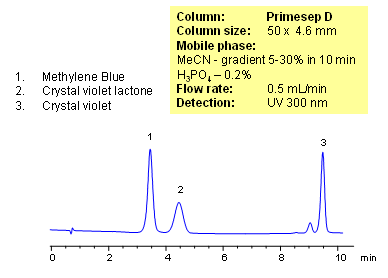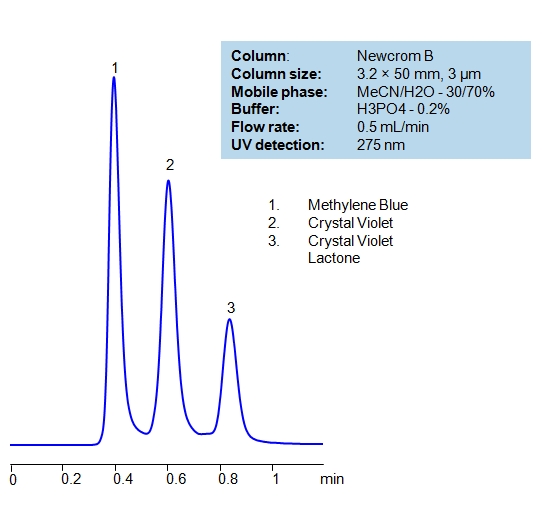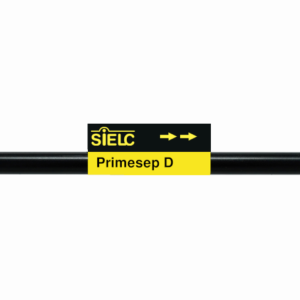| Column | Newcrom B, 3.2×50 mm, 3 µm, 100A |
| Mobile Phase | MeCN/H2O – 30/70% |
| Buffer | H3PO4 – 0.2% |
| Flow Rate | 0.5 ml/min |
| Detection | UV, 275 nm |

Various dyes are widely used in food, textile, and pharmaceutical industries. Dies are aromatic compounds containing ionizable groups. Methylene blue, crystal violet lactone, and crystal violet were separated on a Primesep D HPLC column. Method can be used for separation of other dyes and pigments that are basic and hydrophobic in nature.
| Column | Primesep D, 4.6×50 mm, 3 µm, 100A |
| Mobile Phase | MeCN |
| Buffer | H3PO4 – 0.2% |
| Flow Rate | 0.5 ml/min |
| Detection | UV, 300 nm |
| Class of Compounds |
Dye, Hydrophilic, Ionizable |
| Analyzing Compounds | Methylene Blue, Crystal violet lactone, Crystal violet |
Application Column
Newcrom B
The Newcrom columns are a family of reverse-phase-based columns. Newcrom A, AH, B, and BH are all mixed-mode columns with either positive or negative ion-pairing groups attached to either short (25 Å) or long (100 Å) ligand chains. Newcrom R1 is a special reverse-phase column with low silanol activity.
Select optionsPrimesep D
The Primesep family of mixed-mode columns offers a wide variety of stationary phases, boasting unprecedented selectivity in the separation of a broad array of chemical compounds across multiple applications. Corresponding Primesep guard columns, available with all stationary phases, do not require holders. SIELC provides a method development service available to all customers. Inquire about our specially-tailored custom LC-phases for specific separations.
Select optionsCrystal Violet Lactone
Methylene Blue







